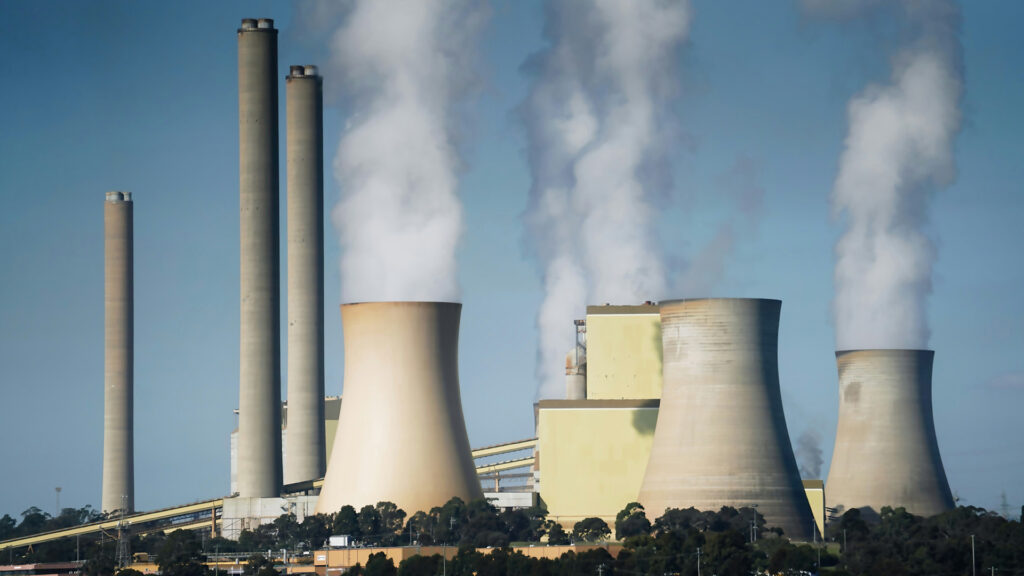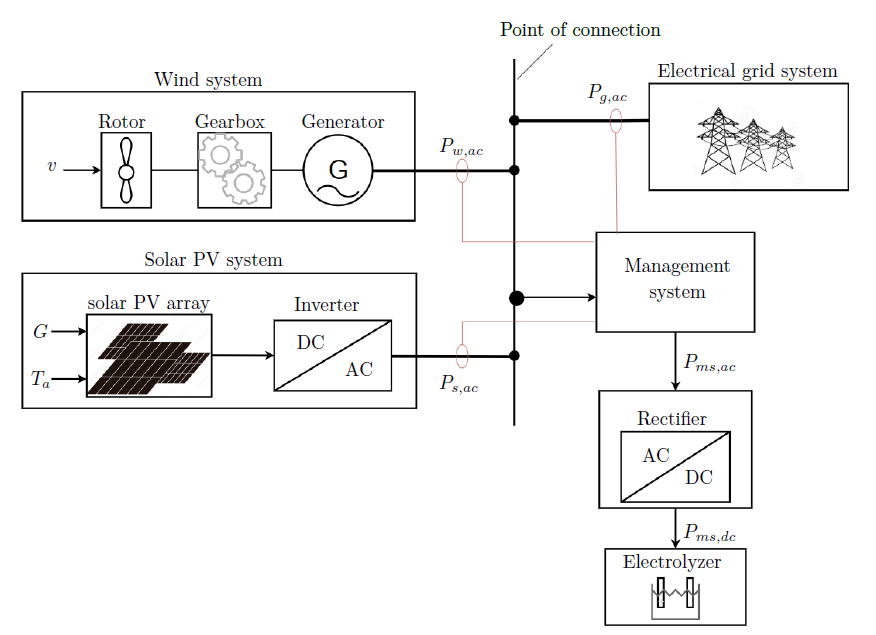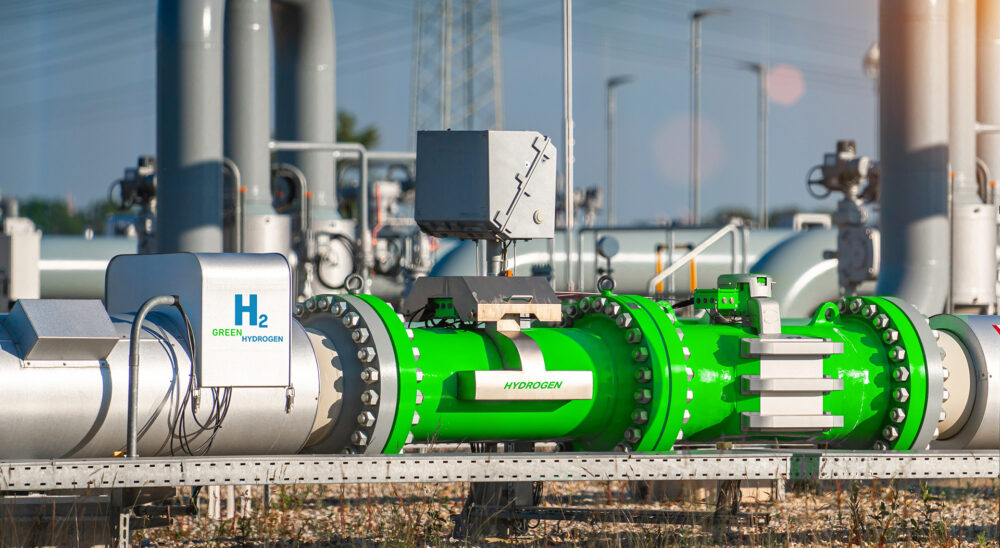South Africa heavily relies on coal-fired power stations for most of its energy production, making it susceptible to the effects of climate change. The country also faces challenges with ageing infrastructure and frequent power outages due to high demand.
Ms Mukoni’s research, under the supervision of Drs Karen Garner and Chantelle van Staden of the Department of Electrical and Electronic Engineering, proposes an optimisation model for a grid-connected hybrid energy system aimed at green hydrogen production. The system comprises wind and solar PV systems that support green hydrogen production through a proton exchange membrane electrolyser.

Research Goals
The optimisation model aimed to minimise the cost of electricity purchased from the electrical grid and maximise efficiency at high reliability. To achieve this, the research set out to:
- Mathematically model a grid-connected hybrid energy system.
- Develop and implement a grid-connected hybrid energy system optimisation model
- using a multi-objective optimisation algorithm using open-source tools.
- Acquire and analyse open-source RE resource data for the chosen case study.
- Apply the developed grid-connected hybrid energy system optimisation model in a real case study to demonstrate minimisation of the cost of electricity and maximisation of efficiency at high reliability.
- Demonstrate the optimal diverse power or energy mix portfolio of the grid-connected hybrid energy system for the chosen case study.
Methodology
A case study was conducted on six renewable energy development zones in South Africa to evaluate and validate the model. The model accurately calculated the ideal wind and solar energy combination based on available resources and energy demand. Consequently, the optimal wind turbine, solar PV module, inverter, and the necessary number of solar PV modules for an efficient grid-connected hybrid energy system were successfully identified.
Due to the intermittent nature of wind and solar resources, renewable energy from the electrical grid was used to meet the electrolyser’s load demand. The optimisation model for the grid-connected hybrid energy system was created using a constrained multi-objective, non-dominated sorting genetic optimisation algorithm implemented in Pymoo, an open-source Python framework.

Figure 1: The proposed grid-connected hybrid energy system to supply green hydrogen.
Going Forward
The study successfully developed the proposed optimal grid-connected hybrid energy system to supply green hydrogen production. The practical application of the optimal hybrid energy system’s practical application was successfully demonstrated using the case study of REDZs in South Africa.
Future studies should consider the development of a self-sufficient, off-grid hybrid energy system. This system would include a battery energy storage system that would store and supply deficient energy required by the electrolyser. Further, there is a need to develop a financial model for wind and solar PV systems. This model would facilitate a comparison analysis between limiting the use of the electrical grid and over-sizing the renewable energy (RE) systems.
In light of the South African energy market’s high growth in energy trading, the option of wheeling energy from an Independent Power Producer (IPP) using a trader, instead of Eskom, should be explored. This is because traders can ensure cheaper tariff costs.
Download and read Mr Mukoni’s full research at https://scholar.sun.ac.za/items/ea91ad97-851d-4825-8101-9a86c5e03c91.





